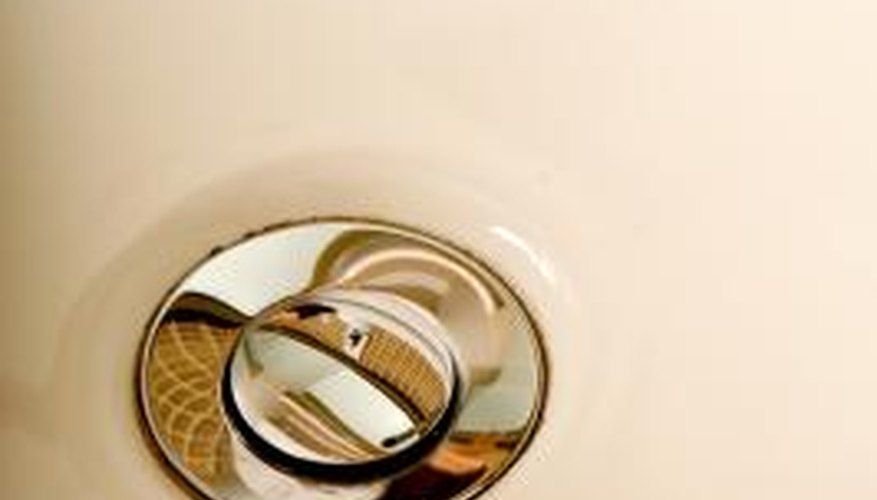When kitchen or bathroom drains are in need of cleaning, they are also often clogged with residue from soaps, hair, grease and other materials that build up over time. In order to effectively clean the drain, the cleaning solution must have the ability to dissolve or loosen these substances to the point that they can easily be rinsed away. Ammonia is a strong chemical that is often found in commercial cleaning products; however, it is not necessary to purchase expensive products when using ammonia on its own can obtain the maximum cleaning benefits.
- When kitchen or bathroom drains are in need of cleaning, they are also often clogged with residue from soaps, hair, grease and other materials that build up over time.
- Ammonia is a strong chemical that is often found in commercial cleaning products; however, it is not necessary to purchase expensive products when using ammonia on its own can obtain the maximum cleaning benefits.
Fill two kitchen pots with 1 qt. of water each and bring the water to a boil.
Set a 1 qt. or larger bucket near the sink that is being cleaned. Carefully pour one of the pots of boiling water into the bucket, taking care not to burn yourself.
Pull on a pair of gloves to protect your hands, then measure out 1/4 cup of ammonia. Empty it into the bucket of water and mix it up with your gloved hand.
Hold the bucket close to the drain to reduce the risk of splashing, and slowly pour the ammonia water down the drain. Leave the solution to sit in the drain for five minutes or longer, to help loosen any grime, soap build-up and any potential clogs in the drain.
Pour the remaining gallon of hot water down the drain to completely rinse away the ammonia and any loosened dirt.
WARNING
Never mix bleach with ammonia to prevent toxic fumes. Avoid pouring bleach into the drain after cleaning it with ammonia. Be careful not to splash or otherwise get ammonia in your eyes while pouring it down the drain.
